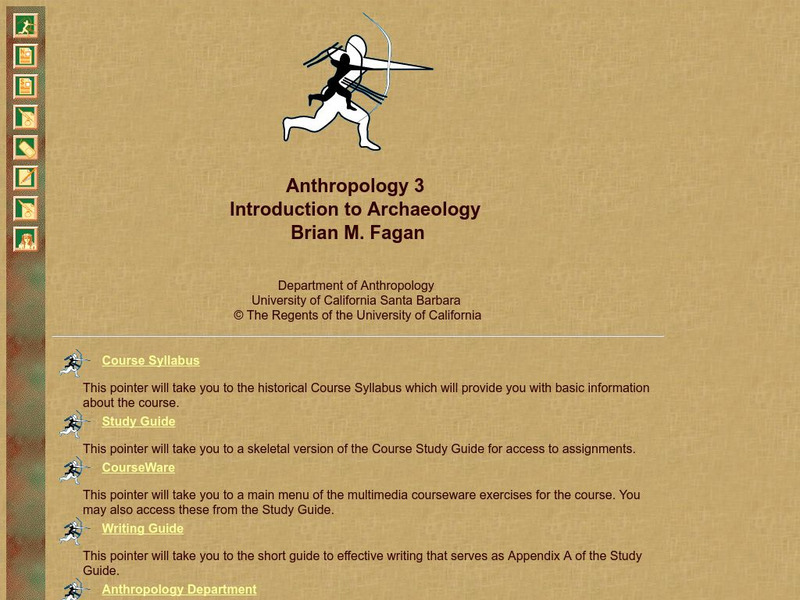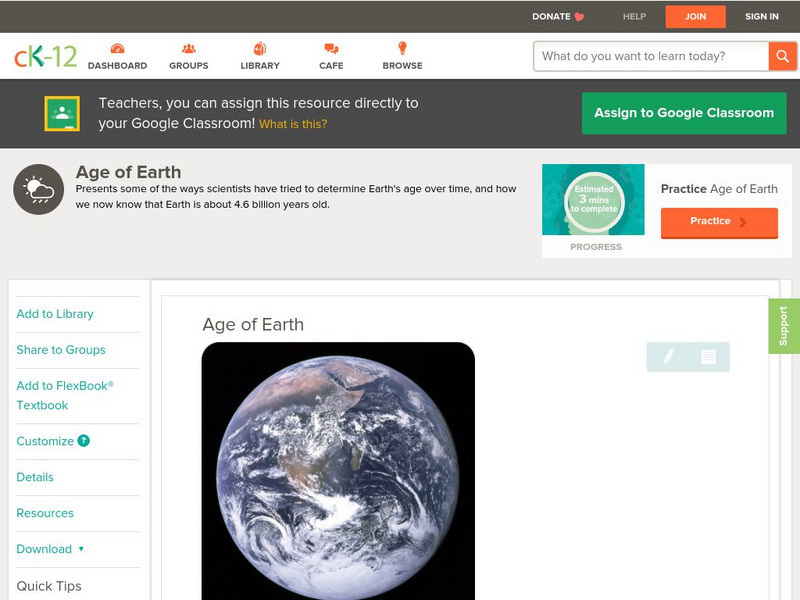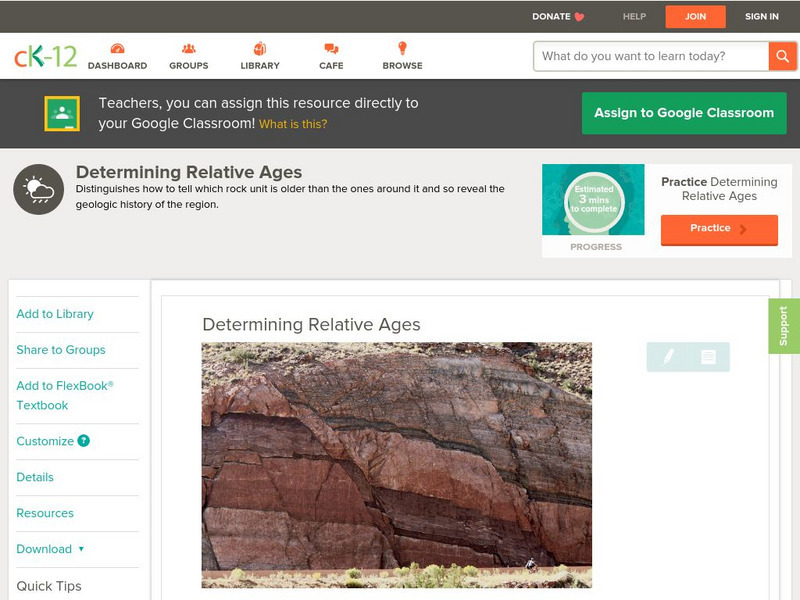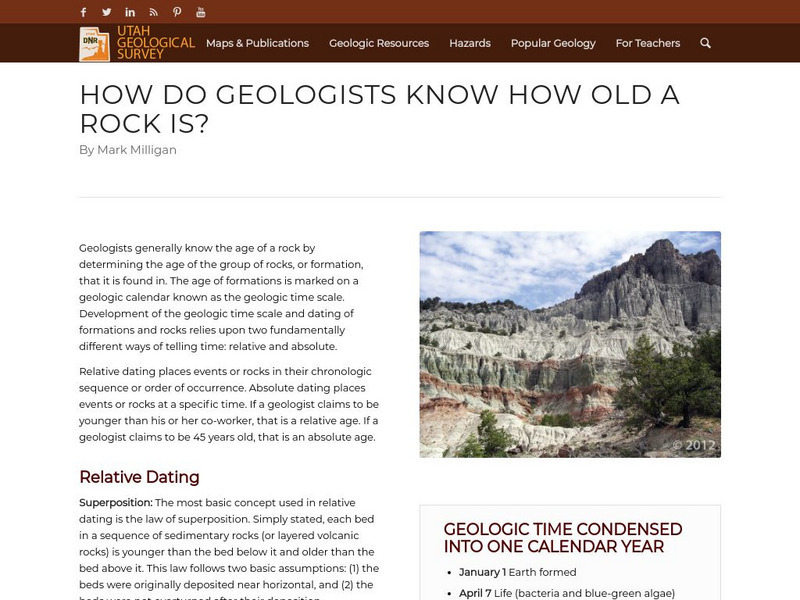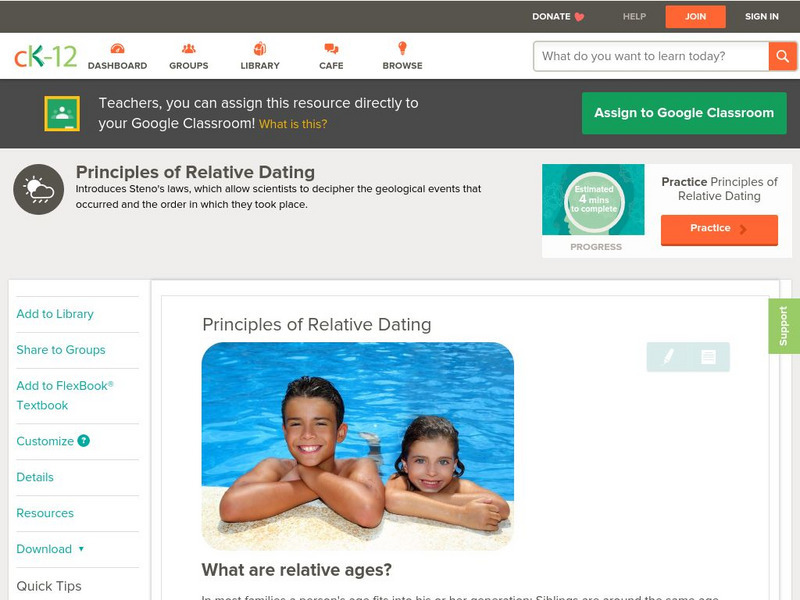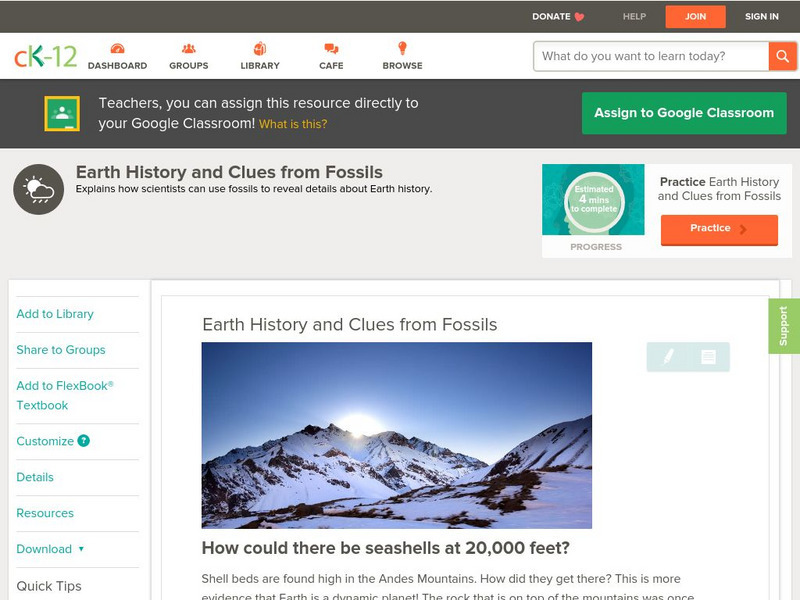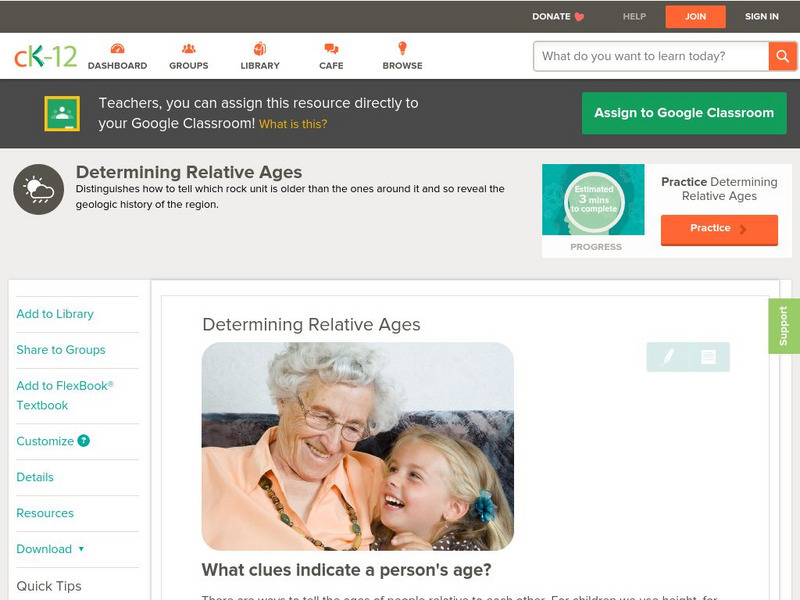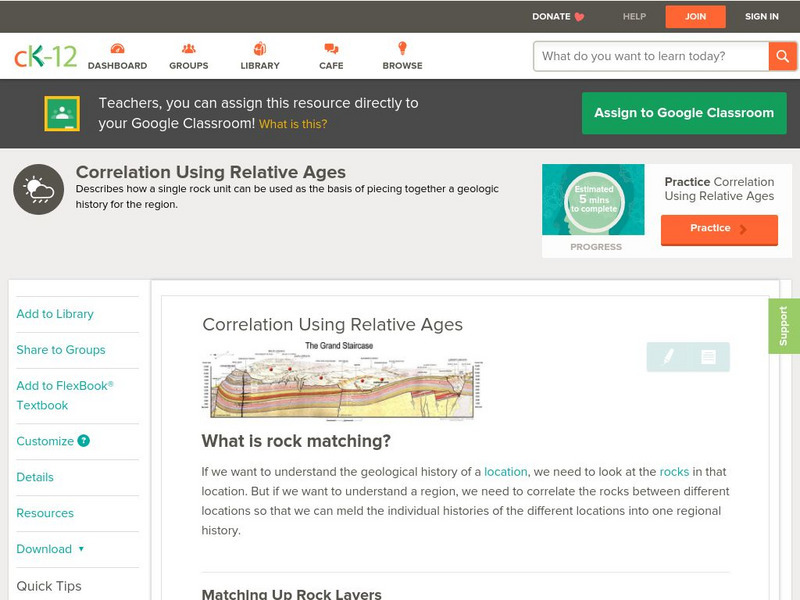Science Education Resource Center at Carleton College
Serc: Mn Step: Relative Dating Using "The Block"
This lesson involves an innovative strategy for introducing the concept of relative dating using a block of wood that has been painted, damaged, and nailed. The task for students is to analyze the order in which these events happened and...
Science Education Resource Center at Carleton College
Serc: American Field Guide: Relative Dating Telling Time Using Fossils
This website integrates video footage and information with lesson plans and activities to teach learners about the concept of relative dating. Students will graph a range chart for ammonites, determine the geologic age for several rocks,...
Science Education Resource Center at Carleton College
Serc: Hotspot Lesson: Final Project
Student groups work on a assigned hotspot chain in this culminating assignment for a series of activities about hotspots and plate motions. Each group gets to study a seamount trail from around the world and presents their findings to...
US Geological Survey
Relative Time Scale
This is a good resource for anyone who wants to understand the historical development that led to our understanding of relative dating. This site also has links to index fossils and a table of geologic time.
US Geological Survey
Index Fossils
If you need examples of index fossils for each of the geologic eras and periods, than this resource is for you. Diagrams of the index fossils and their scientific names are also provided.
University of California
University of California Museum of Paleontology: Distribution in Time and Space
The Understanding Evolution site provides evidence for evolution in biogeography utilizing relative dating, geography, and plate tectonics.
Georgia Department of Education
Ga Virtual Learning: Historical Geology
In this interactive tutorial you will explore how geologists use clues in rocks to determine the order in which rocks formed. Learn how principles of radioactivity are used to assign actual ages to rocks. Students will explore fossils...
CK-12 Foundation
Ck 12: Earth Science: Principles of Relative Dating
[Free Registration/Login may be required to access all resource tools.] How relative positions of rocks allow scientists to compare their ages.
University of California
Ucsb: Archserve: Exercise 1 2: Chronological Methods
A resource highlighting the process of dating methods in archaeology. Look at Relative Dating and Absolute Dating systems.
CK-12 Foundation
Ck 12: Earth Science: Age of Earth
[Free Registration/Login may be required to access all resource tools.] How scientists have been able to determine the age of the Earth.
CK-12 Foundation
Ck 12: Earth Science: Age of Earth
[Free Registration/Login may be required to access all resource tools.] How scientists have been able to determine the age of Earth.
CK-12 Foundation
Ck 12: Earth Science: Determining Relative Ages
[Free Registration/Login may be required to access all resource tools.] How to determine the relative ages of rocks.
CK-12 Foundation
Ck 12: Earth Science: Earth History and Clues From Fossils
[Free Registration/Login may be required to access all resource tools.] How scientists can learn information about the past from fossils.
CK-12 Foundation
Ck 12: Biology: History of Life
[Free Registration/Login may be required to access all resource tools.] This comprehensive lesson by CK-12 explains how scientists learn about the past by examining and dating fossils.
CK-12 Foundation
Ck 12: Biology: History of Life
[Free Registration/Login may be required to access all resource tools.] Describes how scientists learn about the past by examining and dating fossils.
CK-12 Foundation
Ck 12: Earth Science: Earth History and Clues From Fossils
[Free Registration/Login may be required to access all resource tools.] How scientists can learn information about the past from fossils.
Other
Utah Geological Survey: How Do Geologists Know How Old a Rock Is?
Geologists generally know the age of a rock by determining the age of the group of rocks, or formation, that it is found in. The age of formations is marked on a geologic calendar known as the geologic time scale. Development of the...
CK-12 Foundation
Ck 12: Earth Science: Principles of Relative Dating
[Free Registration/Login may be required to access all resource tools.] Introduces Steno's laws, which allow scientists to decipher the geological events that occurred and the order in which they took place, including how the relative...
CK-12 Foundation
Ck 12: Earth Science: Earth History and Clues From Fossils
How scientists can learn information about the past from fossils. [Free Registration/Login may be required to access all resource tools.]
CK-12 Foundation
Ck 12: Earth Science: Determining Relative Ages
[Free Registration/Login may be required to access all resource tools.] Distinguishes how to tell which rock unit is older than the ones around it and so reveal the geologic history of the region.
CK-12 Foundation
Ck 12: Earth Science: Correlation Using Relative Ages
[Free Registration/Login may be required to access all resource tools.] How rock layers in different locations can be connected to make pictures of a region's geology.
CK-12 Foundation
Ck 12: Earth Science: Correlation Using Relative Ages
[Free Registration/Login may be required to access all resource tools.] How rock layers in different locations can be connected to make pictures of a region's geology.
CK-12 Foundation
Ck 12: Fourth Grade Science: Earth Science: Relative Ages of Rocks
[Free Registration/Login may be required to access all resource tools.] Looks at how stratigraphy can be used to determine the relative ages of rocks, how unconformities occur, ways to match rock layers in different areas, and how...
CK-12 Foundation
Ck 12: Earth Science: Principles of Relative Dating Study Guide
[Free Registration/Login may be required to access all resource tools.] This study guide summarizes key principles used in relative dating. Includes a few questions to check for understanding.










